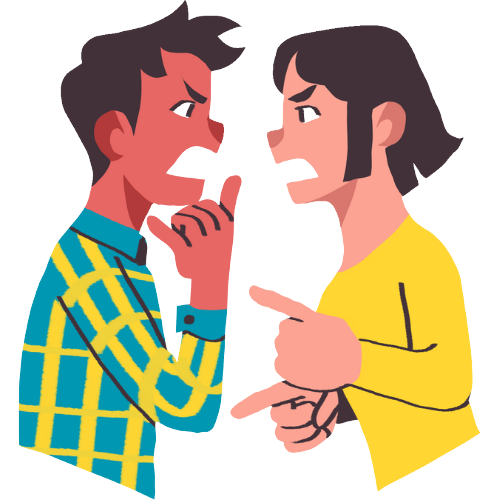Road Rage - A Menace
Literally, "Road Rage" is a term used to refer to the violent incidents caused by stress while driving on high traffic zones on roadways. It is usually associated with "Aggressive Driving". But, in lay man's language, "Road Rage" can be defined as an incident in which an angry or impatient motorist or passenger intentionally injures or kills another motorist, passenger, or pedestrian, or attempts or threatens to injure or kill another motorist, passenger, or pedestrian. "Road Rage" often occurs with exchange of swear words and furious shouts at the fellow commuter.
It has been found that most of the drivers have a feeling of "Road Rage" because it is a cultural norm. Angst and frustration while driving on Indian roads comes naturally which translates into "Road Rage". People learn this behavior from childhood when being driven by parents and adults. In day to day life, more of the incidents can be experienced during peak traveling hours, during fair weather, under moderately congested conditions in urban areas. "Alcohol" has many a times been found to be associated with many of the incidents.
There are many conditions associated with "Road Rage"; including: traffic congestion, driving habits, weather conditions, noise levels, time constraints. Some time it can be an instructive response of careless driving by another driver. With reference to the historical records, in 1997, the U.S therapists have worked to claim "Road Rage" a medical disorder. Although, a few insist that defining "Road Rage" as a medical disorder will allow criminals to plead and provide them an excuse to shrug off.
It is usually emphasized that "Road Rage" and "Aggressive Driving" are not synonymous. "Road Rage" is uncontrolled anger that results in violence or threatened violence on the road; it is Criminal Behavior. These are serious crimes that just happen to occur within the roadways environment. "Aggressive Driving" does not rise to the level of criminal behavior. "Aggressive Driving" includes tailgating, abrupt lane changes, and speeding, alone or in combination. These potentially dangerous behaviors are traffic offenses, but are not criminal behavior. Infact, "Road Rage" can be distinguished from any other traffic incident by its "Willful and Criminal" nature.
In general, "Road Raging" involves menace provoking activities including:
- Speeding and Aggressive Acceleration.
- Tailgating.
- Cutting others off.
- Weaving in and out of traffic.
- Forming a "convoy" to block access to a traffic lane.
- Honking the vehicle's horn or flashing lights excessively.
- Rude gestures.
- Verbal abuse.
- Deliberately hitting another person, vehicle or object with one's own vehicle.
- Hitting a person or vehicle with a weapon other than a vehicle.
- Threatening to use a deadly weapon.
- Revengeful feeling.

"Road Rage" is considered as a menace because it can lead to physical injuries and in some cases it can lead to death also.
Many countries all over the world including: U.S, Canada, Australia, England, Ireland, Japan, New Zealand are taking steps to approach to some solution in this regard. But, approaches to the problem vary, reflecting the different cultural norms of the countries.
"Road Rage" is a serious act and may be seen as a violation of property rights. One of the best way to avoid becoming a victim of "Road Rage" is to avoid responding, avoid making eye-contact. It might happen that what seems to be harassment in one spot may be a simple mistake only. Don't allow driving to become a competition.
Before all, legislations should be made more clear and stringent. Unambiguous laws and penalties are needed and public needs to be educated about its legal consequences. Driver education courses should be made more approachable and taught seriously.
| Do's | Dont's |
|---|---|
| Do make an apology if you have done a mistake. | Don't allow yourself to become distracted by talking on your cellular phone, eating, drinking or putting on makeup. |
| Do try to be seated in the car in case of a conflict. | Don't make and respond to any angry gesture or action. |
| Do tune in to your favorite music to feel relax while driving. | Don't rush if you are getting late. |
| Do try to use public transports. | Don't use abusive language while driving. |
| Do drive within the posted limits. | Don't cut in front of any vehicle. |
| Do look for less congested routes. | Don't challenge by speeding. |
| Do make an attempt to get out of the way in case of a conflict. | Don't make an eye contact. |
| Do make it a point to report aggressive driving to the concerned officials. | Don't make matters worse by triggering confrontations. |